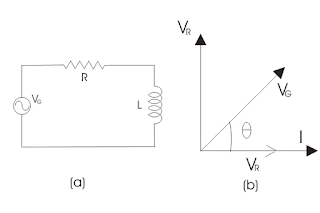Identification of resistor, capacitor and inductor using Ohm meter In our previous section, we discussed about the ac and dc response of a resistor, capacitor and inductor. In this section we will discuss, how do we identify resistor, capacitor and inductor using ohmmeter. Before going to discuss, we should kept in mind the following fact. In a circuit, 1. When voltage is maximum, current will be minimum. 2. When current is maximum , voltage will be minimum 3. If resistance is maximum, current will be minimum and voltage will be maximum 4. If resistance is minimum , current will be maximum and voltage will be minimum 5. If resistance increases with time, than, voltage will also increase with time and current will decrease with time. 6. If resistance decreases with time, voltage will also decrease with time and current will increase with time 1 Resistor identification using ohm meter As we know that, ohm meter is use...





